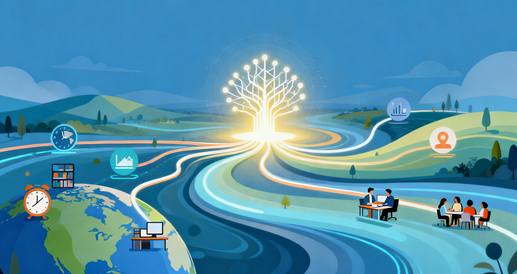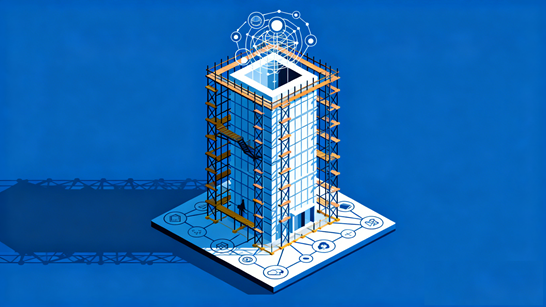The Stress-Free Experience Design System
Transform event planning from stressful logistics to joyful experience design. This system uses psychological principles to create seamless, memorable events while eliminating decision fatigue and last-minute chaos.
The Stress-Free Experience Design System: From Chaotic Planning to Joyful Experiences
Tired of planning events only to be too stressed to enjoy them? This system transforms event planning from logistical nightmare to joyful experience design, using psychological principles to create memorable moments while eliminating planner burnout.
The Experience Design Philosophy
Shift from Logistics to Experiences
Traditional planning focuses on tasks and schedules. Experience design focuses on emotions and memories:
Traditional Planning Questions:
- What needs to get done?
- When should things happen?
- Who is responsible for what?
Experience Design Questions:
- How do we want to feel during this event?
- What moments will we remember in 5 years?
- How can we create meaningful connections?
The Planner Participation Paradox
Most event planners are so busy managing logistics they fail to enjoy the experience themselves. This system solves that through:
Pre-Decision Making:
- Make all stressful decisions in advance
- Create decision trees for potential problems
- Set clear boundaries and criteria before the event
Delegation by Design:
- Identify what only you can do vs what others can handle
- Create simple systems for others to help
- Protect your own capacity for enjoyment
The Three-Phase Experience Design System
Phase 1: Pre-Event Foundation (1-4 Weeks Before)
Experience Vision Setting
- Define 3-5 core memory moments
- Identify the emotional journey you want to create
- Set experience priorities over logistical perfection
Decision Banking
- List every potential decision that might arise
- Make those decisions now in a calm state
- Create "if-then" protocols for common scenarios
Stress-Proofing
- Identify potential stress points in advance
- Design solutions before problems occur
- Build in flexibility and backup plans
Phase 2: Live Experience Design (During Event)
Experience Rhythm Creation
- Arrival Phase: Smooth transition into event mindset
- Building Energy: Gradual increase in engagement
- Peak Moments: Intentional highlight creation
- Energy Valleys: Planned downtime to prevent overload
- Meaningful Closure: Cementing positive memories
Planner Well-being Management
- Schedule your own enjoyment check-ins
- Delegate tasks that cause you stress
- Protect your capacity to be present
- Practice transitioning from planner to participant
Phase 3: Post-Experience Extension (After Event)
Memory Consolidation
- Structured reflection while memories are fresh
- Photo organization with storytelling
- Sharing experiences to reinforce memories
- Gratitude practice for positive aspects
Learning Integration
- What worked well for future events?
- What would you do differently?
- How was your own enjoyment as planner?
- What systems made the biggest difference?
Psychological Principles for Memorable Experiences
Peak-End Rule Optimization
People judge experiences largely based on how they were at their peak and how they ended:
Peak Moment Design:
- Identify where the emotional high point should occur
- Intentionally design this moment with surprise or delight
- Create photo-worthy or shareable peak experiences
Ending Design:
- Don't let events fizzle out—design meaningful closures
- Include elements of gratitude and reflection
- Leave participants with positive final impressions
Decision Fatigue Prevention
The Decision Bank Concept: Every decision made in advance is mental energy saved during the event:
Pre-Decide:
- Budget limits for unexpected expenses
- Weather contingency plans
- Guest issue resolution protocols
- Your own stress response triggers
Social Connection Architecture
Most memorable experiences involve meaningful social connections:
Connection Design:
- Create natural mixing opportunities
- Provide conversation starters
- Design activities that require collaboration
- Facilitate but don't force interactions
Implementation Framework
For Vacation Planning
Week 1: Experience Vision
- What makes a perfect vacation for us?
- What 3 memories do we want to create?
- What balance of activity vs relaxation?
Week 2: Decision Banking
- Pre-book key activities to reduce decisions
- Set daily spending limits
- Plan meal options in advance
- Create bad weather contingencies
Week 3: Flexibility Design
- Schedule empty time for spontaneity
- Identify "must-do" vs "nice-to-do" activities
- Create low-energy options for tired days
For Event Planning (Weddings, Parties)
Month 1: Foundation
- Define the experience vision and key moments
- Make all major vendor and budget decisions
- Create guest experience timeline
Month 2: Detail Design
- Plan the emotional journey minute-by-minute
- Design contingency plans for common issues
- Create delegation systems for day-of tasks
Week Before: Mental Preparation
- Transition from planner to participant mindset
- Confirm all systems are in place
- Practice being present and enjoying
Stress-Reduction Techniques
The "Good Enough" Threshold
Identify what level of perfection is required vs what's "good enough" for enjoyment:
Perfection Required:
- Safety and comfort elements
- Key memory moments
- Guest basic needs
Good Enough Acceptable:
- Minor decorative elements
- Exact timing of non-critical activities
- Photographic perfection
The Delegation Matrix
Only I Can Do:
- Experience vision holding
- Key decision making
- Host/guest of honor responsibilities
Others Can Help:
- Logistics coordination
- Problem solving using pre-set protocols
- Guest assistance and direction
Mental Transition Rituals
From Planner to Participant:
- Physical symbol of role change (changing clothes, location)
- Mental declaration of "my work is done, now I enjoy"
- Delegation of last-minute issues to designated person
Measuring Success
Experience Quality Metrics
- Planner Enjoyment Score: Did you actually enjoy the event?
- Core Memory Creation: How many planned memory moments happened?
- Guest Connection Quality: Depth of social interactions
- Stress Level: Amount of decision fatigue and anxiety
Continuous Improvement
- Post-Event Analysis: What systems worked best?
- Process Refinement: How to make planning less stressful next time?
- Template Updates: Refine your planning templates based on experience
Stop planning events and start designing experiences. Click "Use This Template" to create memorable moments while actually enjoying them yourself.
Öffnen Sie den Zeitplan-Ersteller zum Anpassen und Exportieren.

The Immersive Spacetime Experience Engine
Transform ordinary trips into extraordinary时空experiences. This advanced system uses neuroscience and environmental psychology to design deeply immersive experiences that alter time perception and create lasting transformational memories.
View details

The Digital Nomad Nervous System Optimizer
Optimize your nervous system for the digital nomad lifestyle. This neuroscience-based system addresses the unique cognitive challenges of location-independent work, from environmental adaptation to distributed presence management.
View details

The Knowledge Architecture Engineering System
Engineer robust knowledge architectures that withstand academic pressure. This system uses cognitive science principles to build interconnected knowledge frameworks, optimize neural pathways, and create durable academic understanding.
View details
